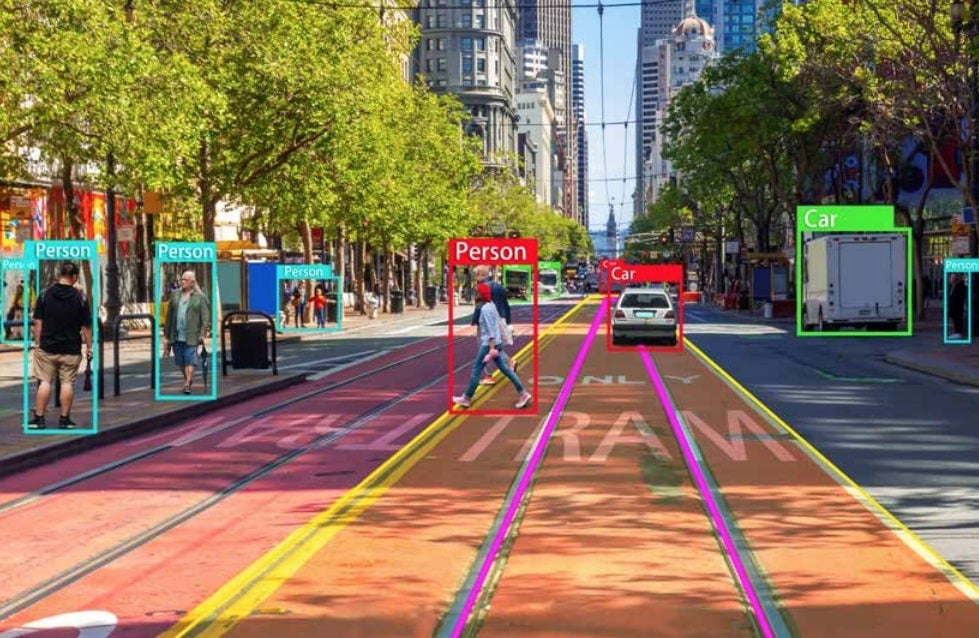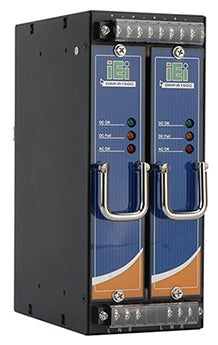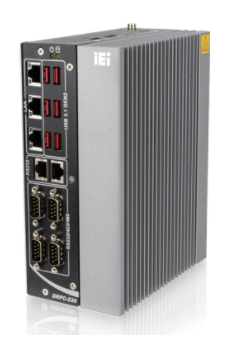Blogs & Articles , Blogs & Case Studies
Guide on Embedded Computers

What Is An Embedded Computer?

An embedded computer is a microprocessor or microcontroller-based system that is specially designed to perform specific functions. Belonging to a larger system, embedded computers come in a combination of hardware and software. They are found in many daily-used objects, including cell phones, cameras, automotive systems, etc.
Benefits of the Embedded Computer
As embedded computers are designed differently from desktop computers, it is hard to compare the two. However, embedded computers do have many advantages especially for the military, industrial and agricultural sectors.
- Small Factor Size
- Highly Reliable
- Power Efficiency
Some of the benefits of embedded computers include:
- Small Factor Size :
Embedded computers are a part of large devices, hence they generally use small factor motherboards. They also use advanced cooling systems and modern enclosure designs that allow them to be as small as possible. Most industrial embedded computers come without fans, relying on thermodynamic principles to cool down. - Highly Reliable :
These computers are highly reliable in every condition and situation, making them suitable for critical mission-based applications such as military or industrial deployments. Embedded computers are built to withstand demanding applications and extreme environments, including continuous vibration, rugged terrains, and high temperatures. In fact, these embedded computers are able to operate at a wide range of temperature (from -30°C to 70°C) as well as resist dust and humidity. - Power Efficiency:
Embedded computers need to be able to operate day and night, 24/7. Due to this, power efficiency is extremely important in embedded computers. To reduce the need for high processing power, embedded computers come with lightweight and dedicated software, and do not use any moving components such as fans that may increase power consumption.
Examples of Embedded Computers
Embedded computers can be used in several fields including Industrial Automation, Digital Signage, Self-autonomous Vehicles, and Space Exploration. Embedded computers are designed to resist harsh conditions, hence they have hard and tough cases to bear extreme conditions like high and low temperature, vibration, shock, dust, and humidity. Due to their different types of applications, embedded computers are available in various types such as rugged industrial box PCs, panel PCs, mini PCs, industrial rackmount servers, vehicle computers, and IoT gateways.
An example of everyday products that utilise embedded computers include digital cameras, calculators, vending machines, automotive embedded systems such as ABS brakes and car alarms, elevators, printers, and GPS.

Characteristics Of Embedded Computers
Although embedded computers are used in a wide range of special and specific-function systems, there are similar characteristics between them that provide benefits to the applications.
These characteristics include:
- Small Factor Size - The small form factor of the embedded computer allows it to function in tough locations and conditions. Soldered components and SoC design reduce component complexities, making embedded computers ideal for tight locations and rugged deployments.
- Passive Cooling System - Embedded computers do not use mechanical fans. Instead, they use a passive cooling system that utilises heat pipes and heat sinks. Embedded computers also tend to use low thermal design power (TDP) components together with the passive cooling design, allowing them to dissipate harmful heat generated by components. This makes embedded computers especially well equipped for rugged applications where temperature may not be under control.
- Rugged Design - Embedded computers feature a rugged design, allowing them to resist shock and vibration, withstand wide voltage, and work in a wide range of operating temperatures. These features are key in minimising points of failure and ensuring that embedded computers function with stability and longevity. Wide voltage protection is crucial for environments that may experience spikes in voltage. Resistance against shock and vibration are essential for in-vehicle applications.
- Low Maintenance and Reliability - Embedded computers are designed to be reliable and low in maintenance, which explains the fanless and cableless design as well as the minimised number of moving components. The lack of moving components also means reduced risk of damaged components when products with embedded computers are used in rugged environments, where elements of shock and vibration are present. These embedded computers need to be reliable to perform continuously 24/7 as per the situation's need.
- Dedicated Nature - Embedded computers are built in a way that allows them to take advantage of customised software to minimise hardware requirements. For example, Microsoft has developed a version of Windows (Win 10 IoT) that specifically targets embedded and IoT applications, offering developer tools and informative support.
- Low Power Consumption - Embedded computers use power-efficient processors that ensure the internal components do not generate a high amount of heat. Power efficient processing also eliminates the need for moving components and fans, which then reduces power consumption, resulting in overall lower costs.
- Internet Of Things (IoT) - This feature allows those using embedded systems to transform their products using Artificial Intelligence (AI), machine learning, and edge computing. The IoT's role is to collect all the sensory data together with the processing capabilities of embedded computers, so that they can be analysed and used to achieve required results. IoT plays an important role in encouraging companies to improve their productivity, and to change the way they approach business.
Types of Embedded Computer:
- The Rugged Industrial Box PC
- The Panel PC
- The Mini PC
- The Industrial Rackmount Server
- The Vehicle Computer
- IoT Gateway
1. The Rugged Industrial Box PC
These are built tough with sophisticated cases to keep the embedded computers safe in rough conditions. Generally, these cases are made of ionized aluminum, which makes them strong, durable, and safe to use in an external environment even without extra protection. The case keeps the rugged computer resistant to corrosion, dust-proof, and humidity-resistant, allowing it to be installed outdoors without requiring any extra layer of protection. The electronics within the computer are also made to be robust and strong. The rugged industrial box PC is effective for remote facilities, such as offshore oil rigs.
2. The Panel PC
Panel PCs are available with an integrated display screen and keyboard, and occasionally an all-in-one touchscreen. These PCs can be changed or expanded with different I/O modules as per the industry standard. These embedded computers are created to provide better and easier interaction with humans through its screens and interfaces. Some Panel PCs feature touchscreens that can be controlled through work gloves, and are protected from toxic materials and shock. Panel PCs are ideal for places where people may not be able to access, such as food processing machines, big robot arms, packaging industry, and more.
3. The Mini PC
These are low-computing embedded computers that are small in size and are available at a cheaper cost. Mini PCs are ideal for use in small confined places where some intelligence is needed. For example, a mini PC embedded computer would work very well as a security device in network installations, such as a Firewall or a VPN router. It is often used in manufacturing facilities or industrial installations that require constant operation and security in harsh conditions.
4. The Industrial Rackmount Server
Rackmount servers are a type of embedded computer designed to be installed in a rack. Unlike the tower server, which needs to stand by itself, rackmount servers can be put on the rack with other servers stacked on top. Industrial rackmount servers come with a powerful CPU and memory, and are considered rugged high performance computers ideal for challenging and harsh conditions. Industrial rackmount servers are extremely high performing, and can tolerate a wide temperature range (-40~70°C).
5. The Vehicle Computer
In-vehicle embedded computers are designed to be installed in vehicles. They are rugged fanless devices that can withstand vibration, harsh temperature, humidity, and dust, as well as operate in a wide range of temperature. They also feature wireless capabilities to support mobility and long range communications, and are suitable for applications including emergency response vehicles such as ambulance, police or firefighters.
6. IoT Gateway
The IoT gateway works like a bridge between different types of communication technologies, which can vary in terms of connectivity types, interfaces, or protocols. The IoT gateway provides a connection between the IoT sensors and the Internet, collecting data from external sources, translating protocols and pre-processing the data.

Embedded Computer vs Industrial PC vs IoT Gateway

Embedded computers know by several names like Box PC, Gateway, Controller, or Industrial PC, but an embedded PC is a specially designed computer system that is installed in different bigger devices or systems. Embedded computers are available in numerous shapes and sizes that can be found in a small ARM-based device to bigger military gadgets. Embedded computers play a crucial role in connecting machines, people, places, things, and the cloud and it is a key factor to evolve the Internet of Things.
The Advantages of an Embedded System
Embedded computers have many advantages, including:
- The central processing core in embedded systems is built in a way that makes them less complicated and easier to maintain. As they are designed to have a limited function, this allows them to be more efficient when performing their tasks.
- Embedded systems have smaller parts, which reduces the cost to build and produce them.
- As they are located inside another device, embedded systems are not as accessible and easy to service. Because of this, greater care is taken when they are developed. Also, because they are almost inaccessible for repair, most embedded systems are programmed in a way that they will not affected other related systems if they malfunction.
- Embedded systems are easy to maintain, as their power supply is within the system and they do not need any remote maintenance.
- Embedded systems do not use or need the redundant programming and maintenance involved in other system models.
Disadvantages Of Embedded Computers
- They can not do multiple tasks as they are designed for a specific function.
- Does not support external devices.
What Are Embedded Computers Used For?
Embedded computers are present everywhere, from large and important devices like data collection devices in solar arrays and navigation equipment on NASA’s planetary rovers, to other smaller scale devices such as complex digital signage displays and modern interactive kiosks.
Most Popular Applications For Embedded Computers
Embedded computers are popular as they are used in most electronic devices we come across. These embedded computers can have a wide range of applications.
- Security And Surveillance - These can be used in security areas as they can operate 24/7. Embedded computers will be found in mobile IP cameras and sensors of the phone. Also, they can be installed at home or in public areas.
- Machine Vision - They capture and analyse the image sensory data due to the presence of industrial hardware and trained software. This feature is applied in manufacturing light-out to co-bot.
- Digital Signage - It is used in LED panels, high-resolution displays, and projectors to display informative or required content on screen.
- Factory Automation - These computers enable safe and correct data transmission in quick time due to the presence of better connectivity. They help in regulating transportation smoothly from flights to trains.
- Transportation - Embedded computers are built in a way that allows them to take advantage of customised software to minimise hardware requirements. For example, Microsoft has developed a version of Windows (Win 10 IoT) that specifically targets embedded and IoT applications, offering developer tools and informative support.
- Self-service kiosk and Interactive Smart Kiosk Machines - The use of embedded computers and touchscreen panels give a seamless experience to the users. These are useful especially in high traffic places, where many users need to use them quickly, like in shopping malls. Kiosk machine manufacturers create machines with embedded touchscreens, sensors, cameras, etc along with interactive software. The combination of advanced software and embedded hardware keeps the operational experience smooth.
General Computer vs Embedded Computer
A general computer and an embedded computer are very different from each other. One major difference is that the general computer can perform multiple tasks and run multiple applications at the same time, whereas the embedded computer is purpose built to perform a specific task.
General computers or desktops have a traditional motherboard that allows its components to be replaced or extended. Embedded computers, however, have all their components burned-in in the motherboard or printed circuit board, and cannot be expanded.
Another difference is that general computers support external devices and peripherals, and can be developed as per the latest technology, but embedded computers are limited to a few devices.
Functions Of Embedded Computers
Embedded computers are the most used microprocessor in the present world. It plays a vital role in developing advanced gadgets to fulfill the present requirements.
- These computers help to reach unreachable places for humans and operate in harsh conditions.
- It operates day and night without requiring any maintenance for a longer period.
- It boosts the performance of a gadget and helps silently, embedded inside the device.
- Also, it functions as a major factor in enhancing communication between different platforms, and store and access data to provide the required solutions.
- Its versatile size helps it to fit in everywhere.




